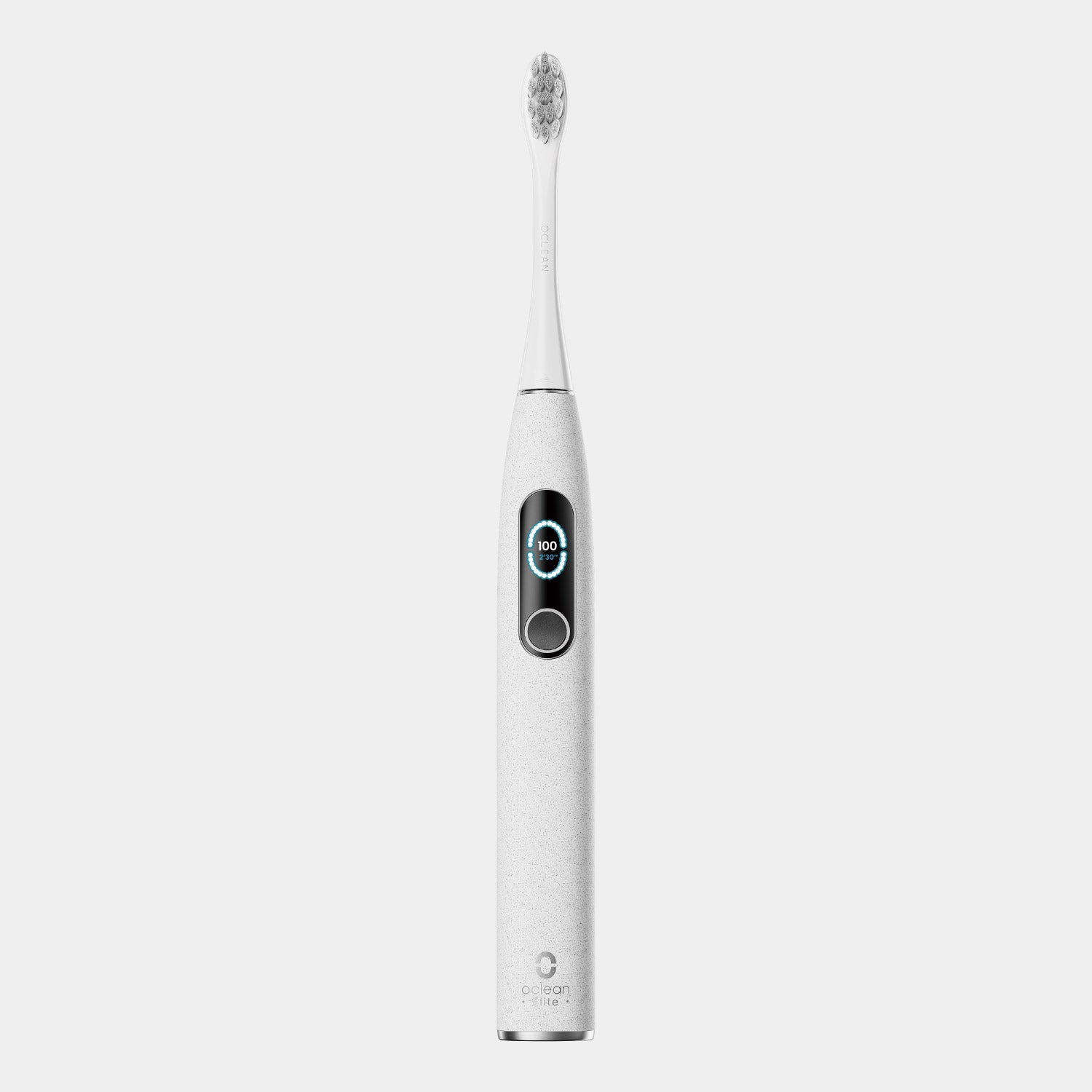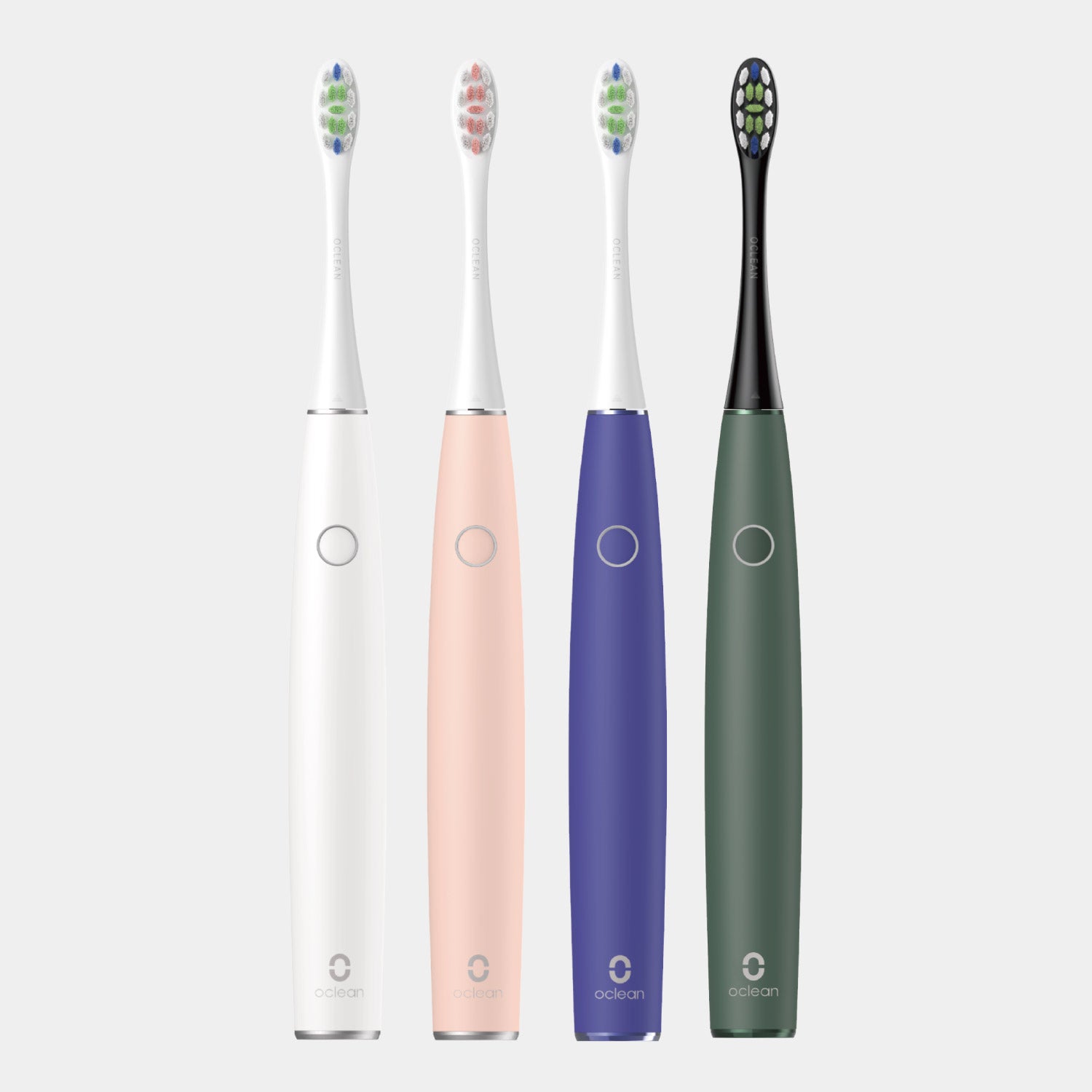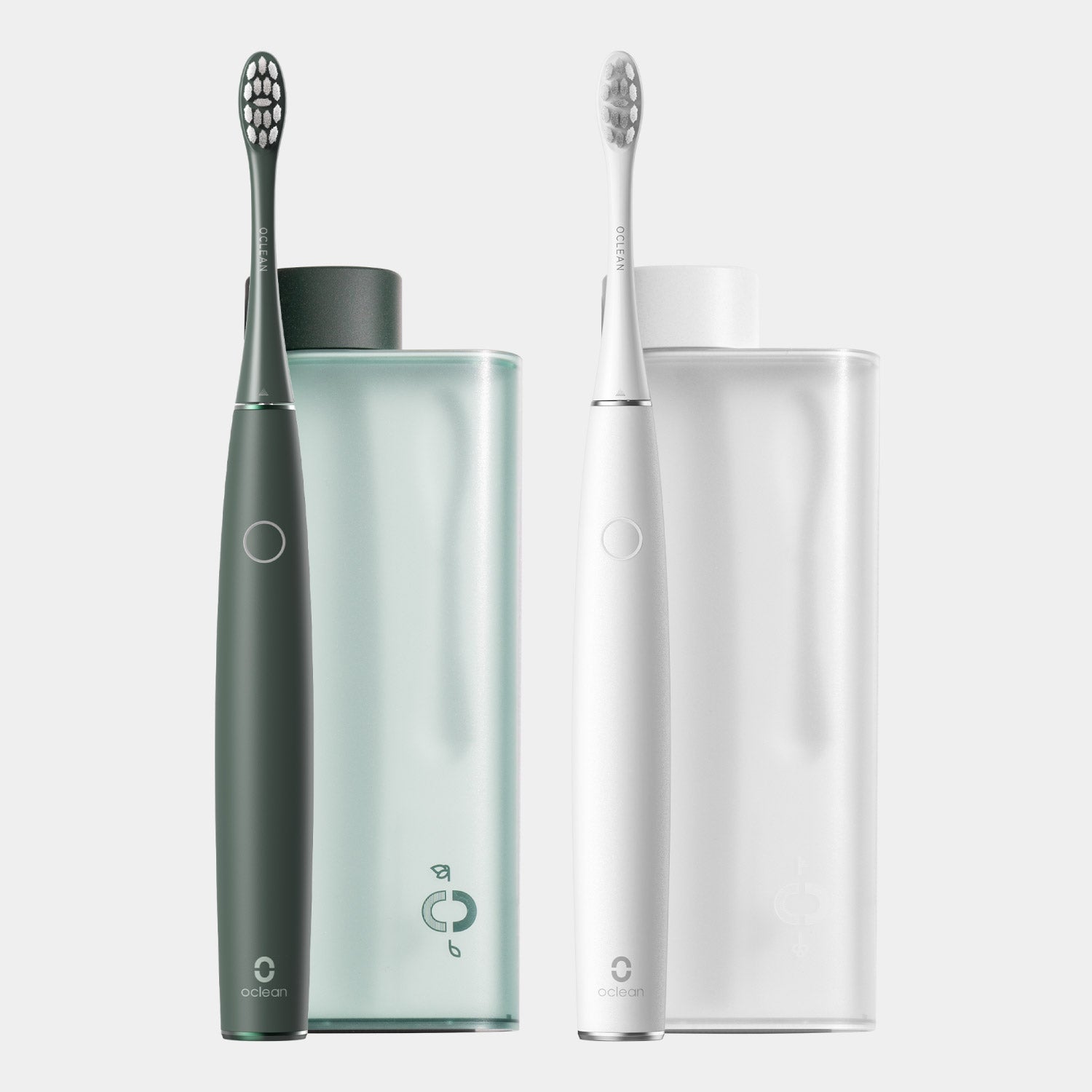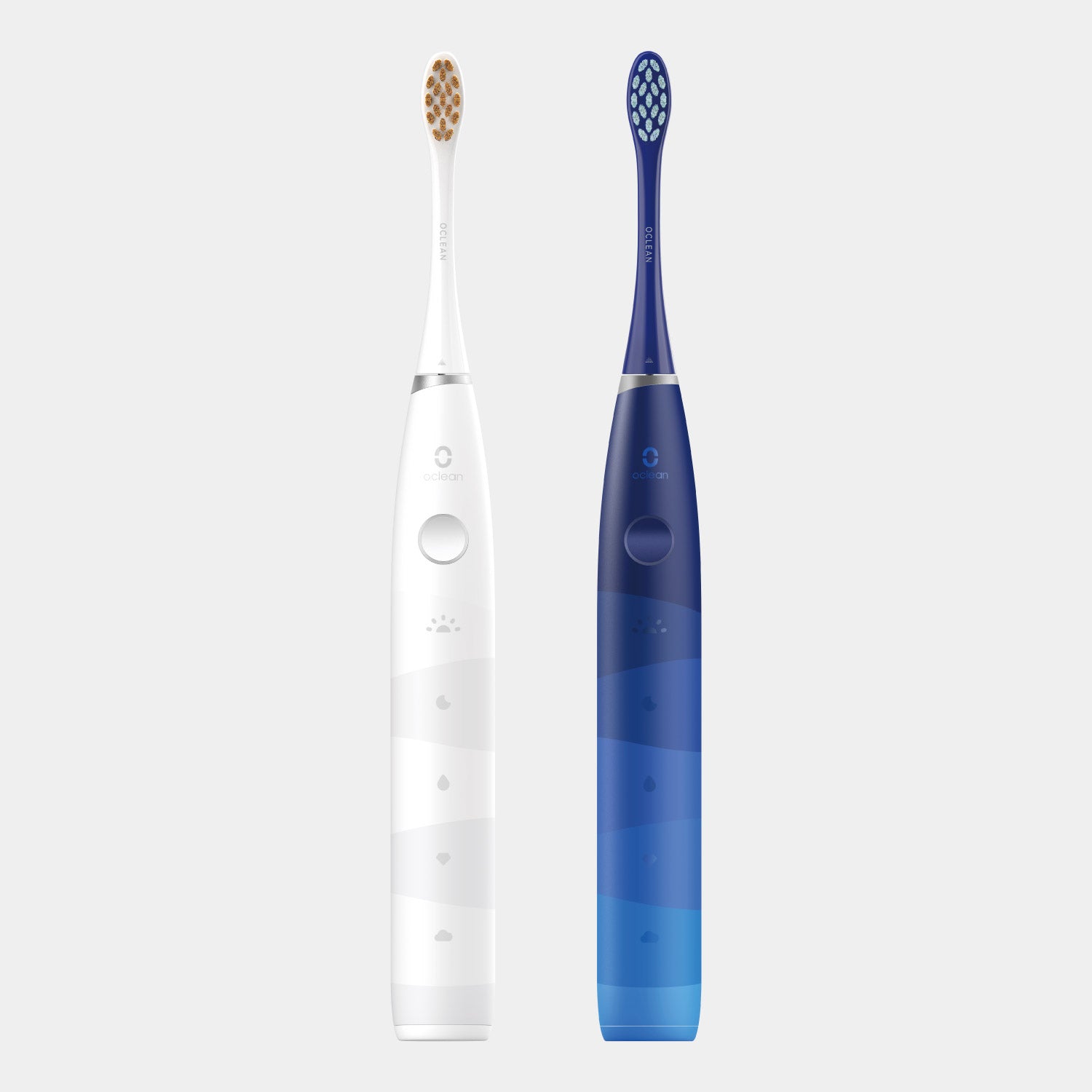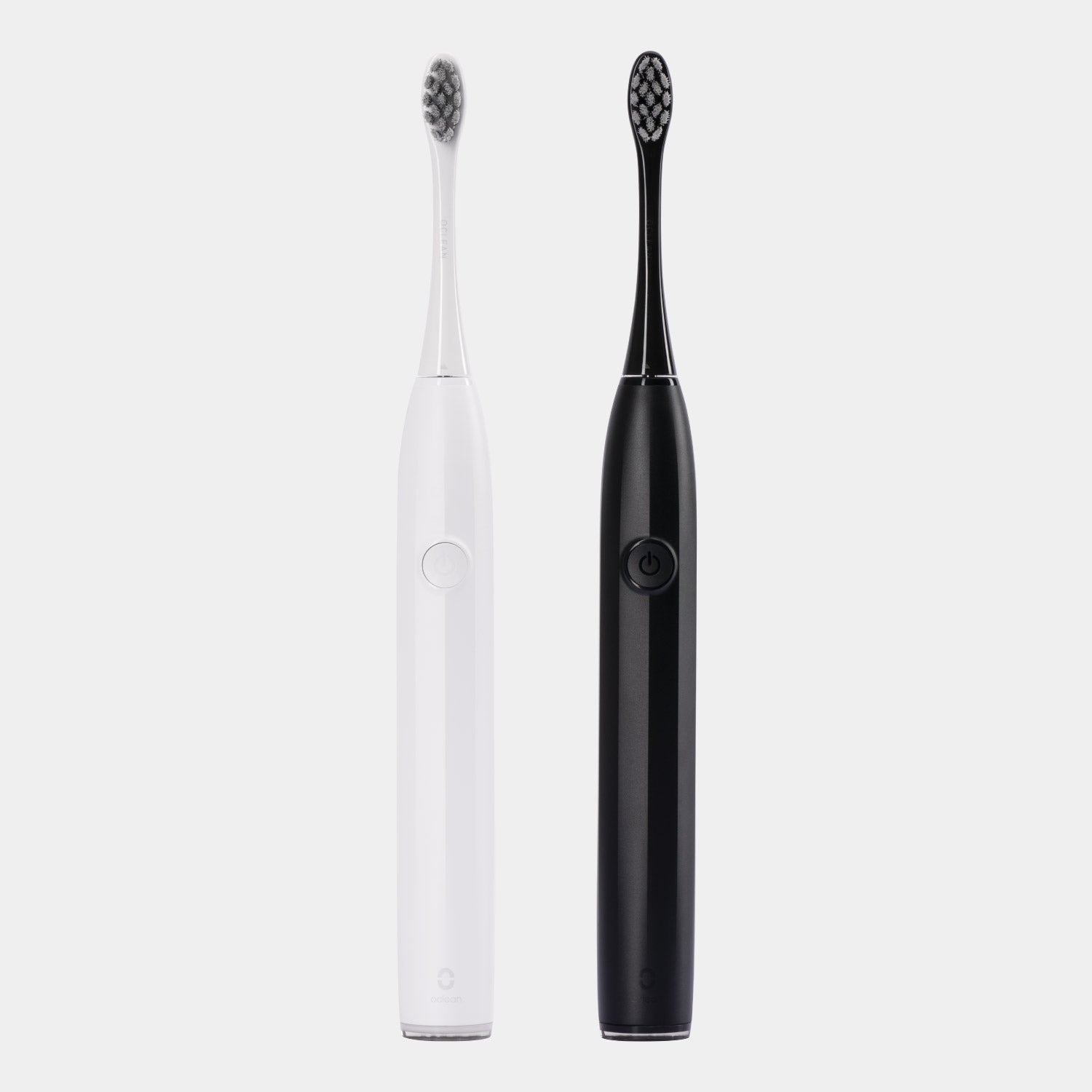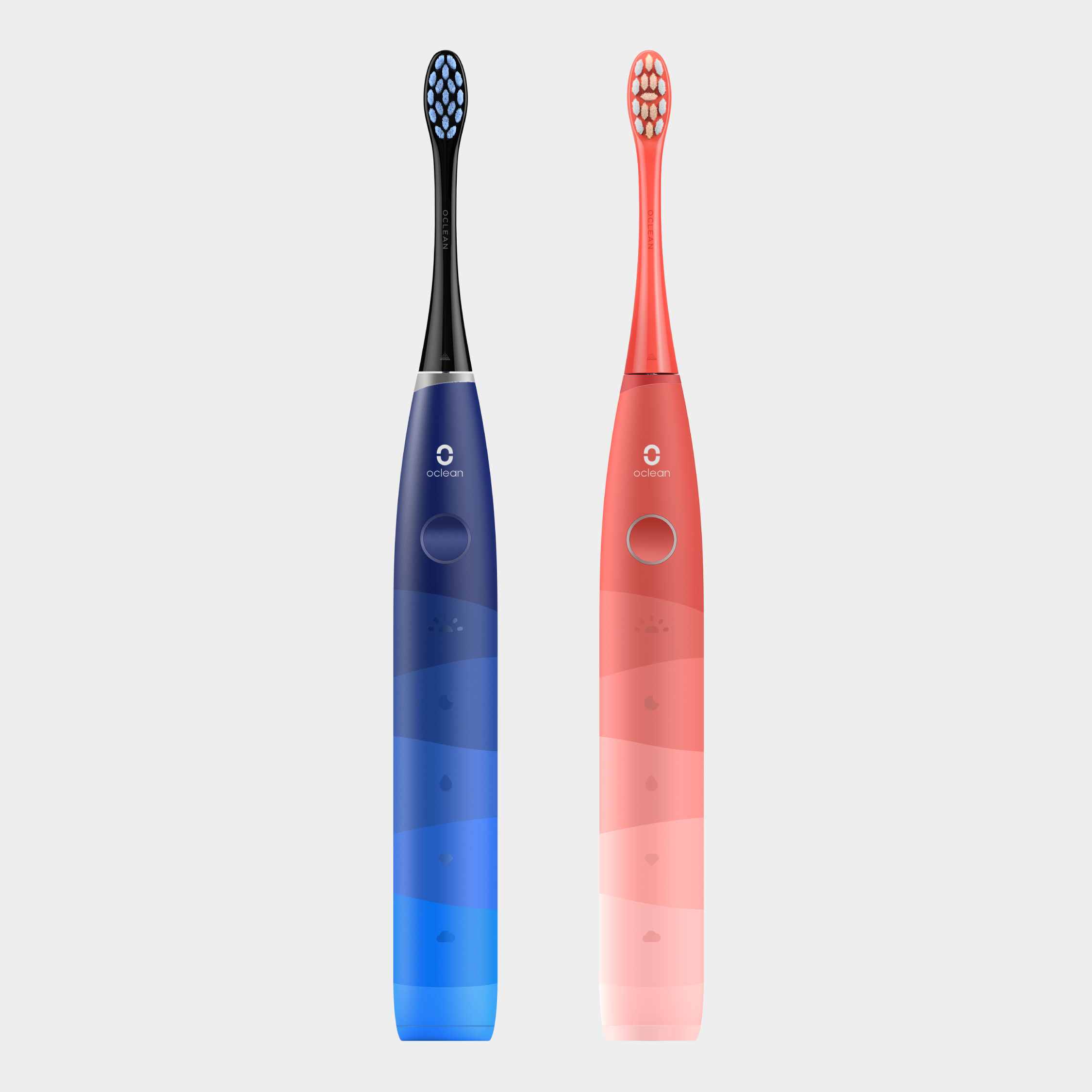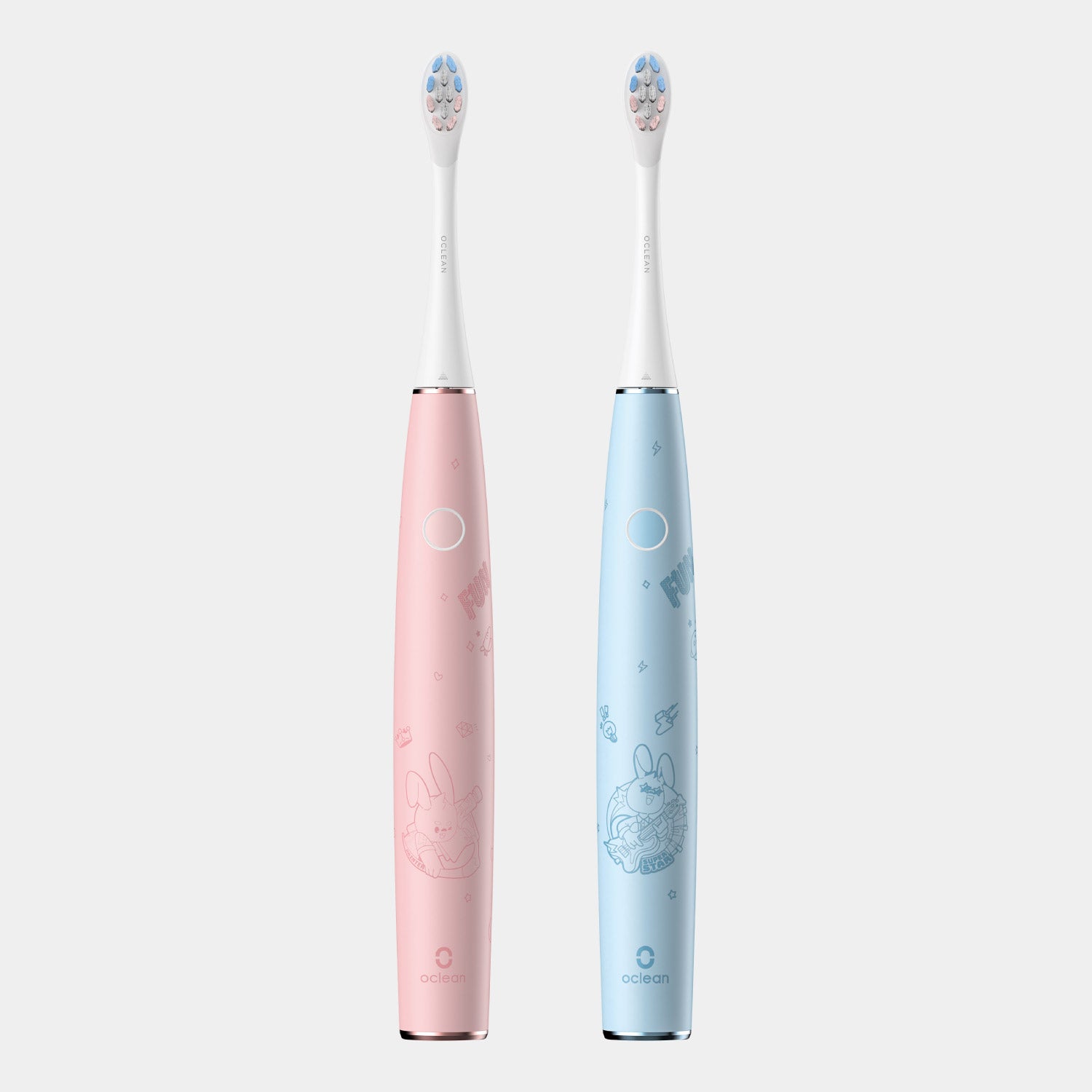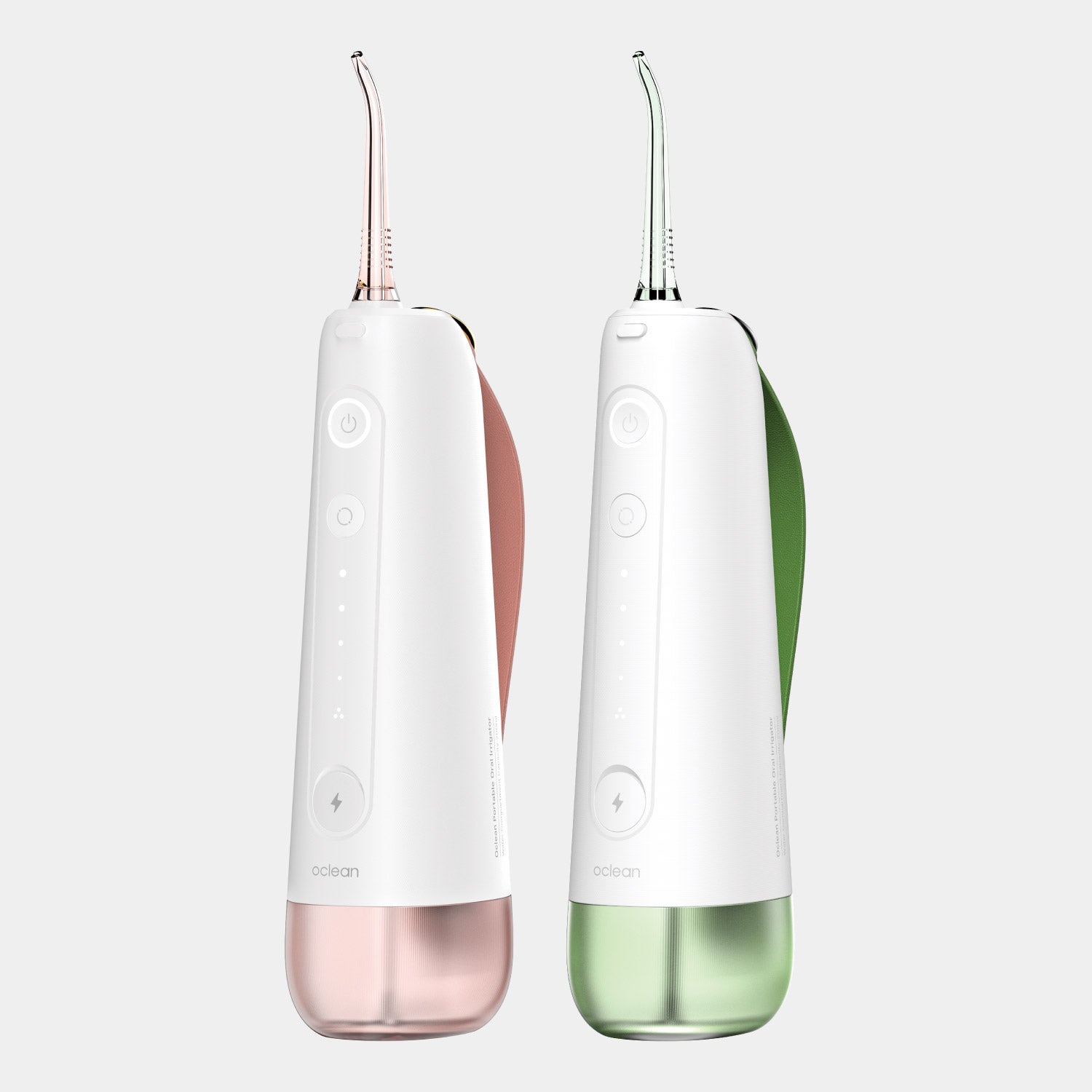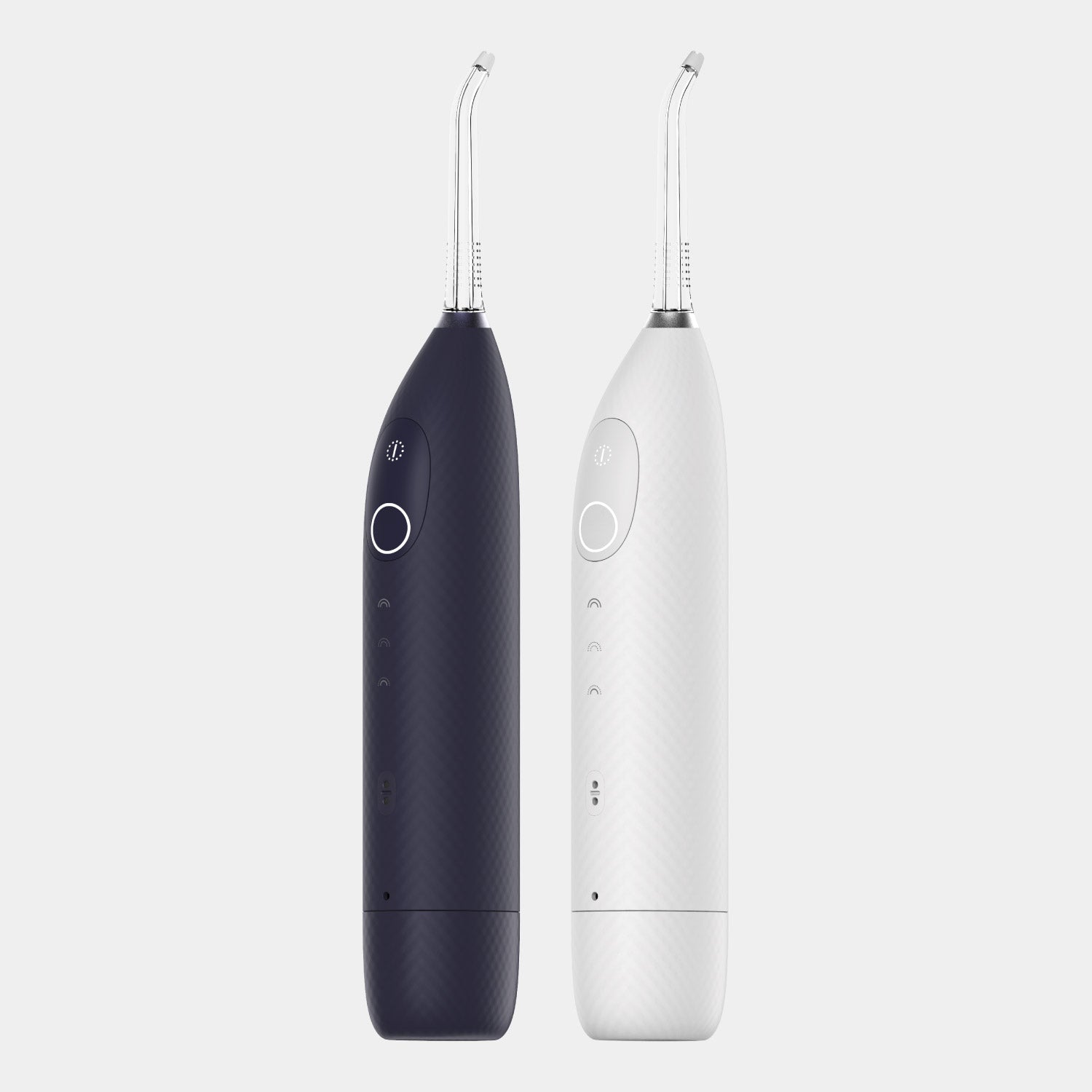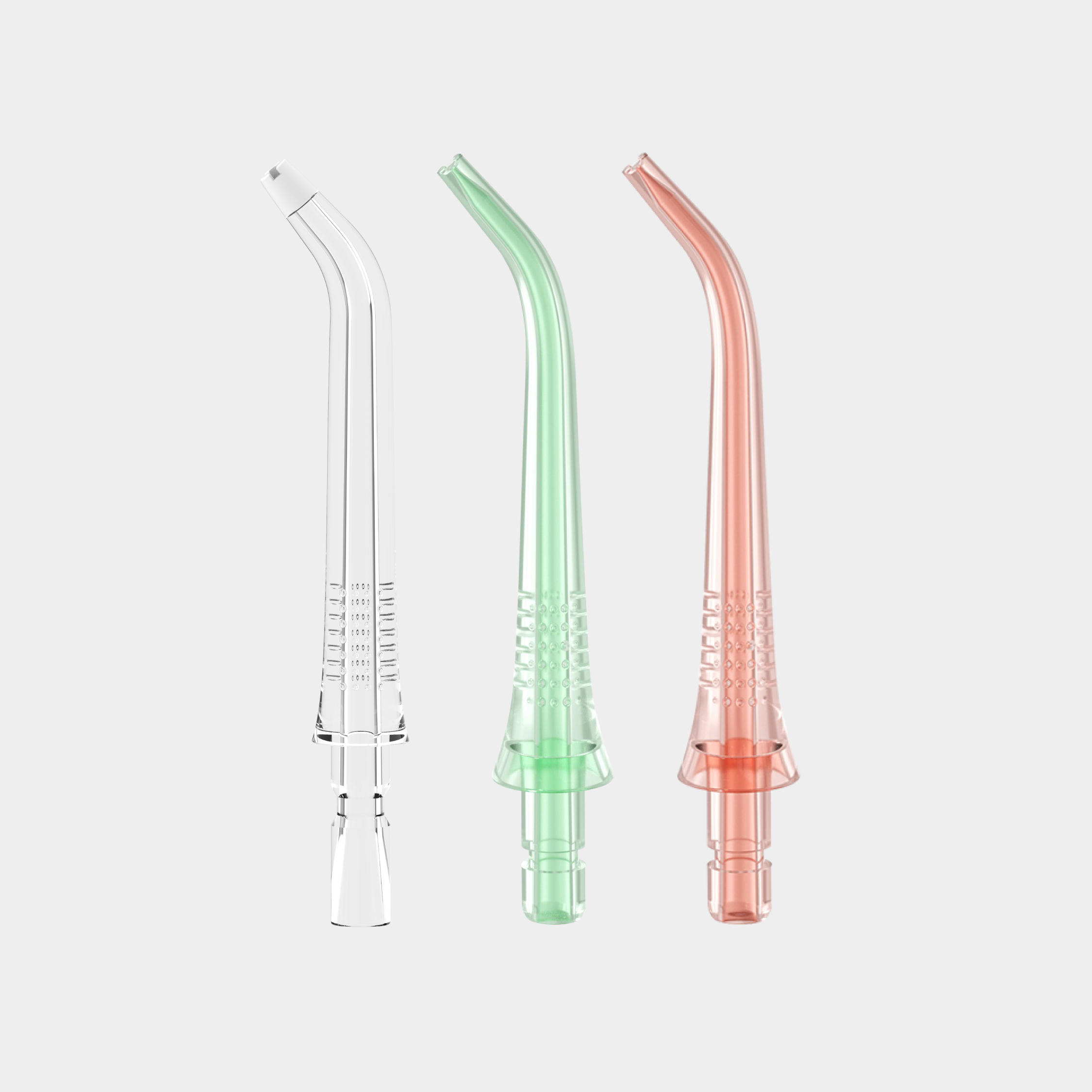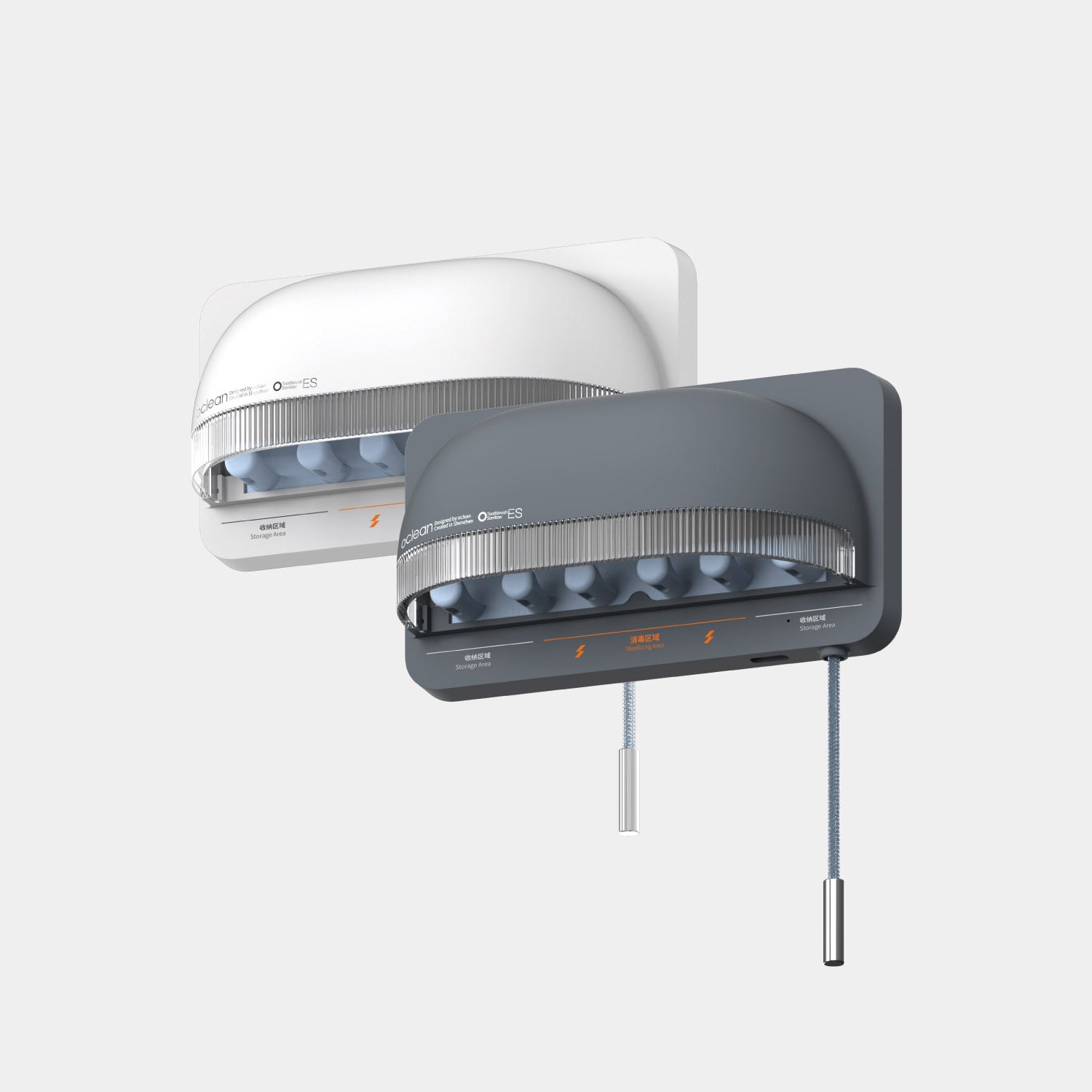When it comes to maintaining oral hygiene, choosing the right toothbrush can make a significant difference. Among the plethora of options available, two types stand out: the traditional electric toothbrush and the innovative sonic toothbrush.
Even though both toothbrush types are known to be more effective in removing plaque compared to doing it manually, they are differentiated by how they function. Electric toothbrushes, also called oscillating toothbrushes, scrub the teeth by rotating mechanically. On the other hand, sonic toothbrushes can do scrubbing with ultrasound frequencies. They do not only effectively scrub by direct contact with bristles but also set into motion fluids that go beyond the surface to scrub.
This guide delves into the "sonic vs electric toothbrush" debate, helping you understand their similarities, differences, and ultimately, why the sonic toothbrush might be the superior choice for your dental care needs.

The Science Behind Sonic and Electric Toothbrushes
Both types of toothbrushes enhance the cleaning process, and learning the science behind how both types of toothbrushes operate may help you make better decisions regarding your dental hygiene. It is essential to comprehend the key difference in the interaction of toothbrushes with teeth and gums.
Advanced models of sonic toothbrushes use high-frequency vibrations, which means they can produce as much as 84,000 brush movements per minute. Apart from powering the bristles, this rapid motion leads to the creation of fluid dynamics. During this process, microscopic bubbles and waves are generated, which reach areas like gumline and restricted spots between teeth. As a result, sonic toothbrushes are highly effective at plaque reduction and improvement in gum health.
The scrambling motion of the traditional electric toothbrushes (also known as oscillating or rotating toothbrushes) is not as effective. The speed for these is normally about 3,000 to 7,500 strokes per minute. Instead of bristles fluid motion, these types of toothbrushes rely more on a physical action of scrubbing plaque off the surface of teeth.
The most important point is that both toothbrushes enhance oral care but sonic toothbrushes provide superior cleaning because they can both brush and use a fluid movement which cleans underneath the bristles and is more effective.

Sonic vs. Electric Toothbrush
Before diving into the distinctions, it's essential to understand the basics of both types. Both sonic and electric toothbrushes are designed to provide a more efficient clean compared to manual brushing. They offer features like timers, multiple brushing modes, and rechargeable batteries, ensuring a comprehensive and convenient oral care routine, ushering in the future of oral care.
Sonic toothbrush
As discussed before, a sonic toothbrush operates using high-frequency vibrations, producing thousands of brush strokes per minute. This rapid movement creates dynamic fluid activity, pushing fluid between teeth and along the gum line. The result is a thorough clean that can reach areas traditional electric toothbrushes might miss.
Electric toothbrush
Traditional electric toothbrushes, on the other hand, use a rotating or oscillating motion to clean teeth. While they also provide a more efficient clean than manual toothbrushes, their technology is relatively simpler and might not reach as effectively into tight spaces as a sonic toothbrush.
Sonic vs. Electric toothbrush: Key Differences
Understanding the key differences between these two types can help in making an informed decision. Here, we break down the most significant distinctions in the "sonic toothbrush vs electric" debate.
Specific Use Cases
For a person with sensitive teeth and gums, a sonic toothbrush is most often the best option. The vibration is gentle so plaque is detached with minimal pressure thus causing minimal irritation. Unlike traditional electric toothbrushes, which rely on direct bristle scrubbing, sonic toothbrushes use fluid movement that cleans beneath the bristles which lowers the chances of gum abrasion.
Sonic toothbrushes are superior again for a person with braces or dental implants or orthodontic work. The fluid motion of these toothbrushes penetrates tight spaces between brackets and wires better than the oscillating toothbrushes. As a result, these types of toothbrushes are recommended for orthodontic patients because they help get rid of plaque without having to brush harshly.
Ease of use is particularly important for children and elderly users. Some people may think using a rotating electric toothbrush is easier, but sonic toothbrushes are much simpler as the high-speed vibrations do most of the work. Furthermore, their lightweight design makes them easier to handle for those with limited dexterity.
For those who travel often, sonic toothbrushes typically have a longer battery life, which reduces recharging needs. They are also quieter, which makes them less disruptive in shared environments.
As with any product, the best toothbrush ultimately comes down to each person's individual oral health needs. However, sonic toothbrushes are generally more versatile and effective in most situations.

Comfort, Learning Curve, and Adaptation
A new toothbrush might change things up, and adapting to an electric or sonic toothbrush after a manual one might take a bit of time. Each type comes with a unique brushing experience, and each user's reaction is usually dependent on their individual preferences and sensitivities.
If you are using a sonic toothbrush for the first time, the sensation of vibration will be unlike anything you have felt before. Unlike conventional electric toothbrushes that rotate or oscillate, sonic toothbrushes emit high-frequency vibrations, which, at first, can be quite ticklish, particularly on the gums. A few users have reported a tingling sensation in the initial few uses of the toothbrush, but that sensation fades as they adapt to the new brushing style. People with gum recession or sensitivity prefer sonic toothbrushes as they are less abrasive on the teeth and gums.
On the other hand, electric (oscillating) toothbrushes have a more mechanical feel and experience due to the firm and rotating motion of the brush head. A few users prefer this stronger brushing action, whereas some do not, especially when having gum sensitivity.
Since these brushes operate on direct bristle contact as opposed to fluid dynamics, maneuvering these brushes around the mouth is rather difficult.
Effectiveness Over Time
Sustaining long-term oral health involves more than daily brushing; it also incorporates the toothbrush's ability to control plaque accumulation and cavities as well as gum disease. While both electric and sonic toothbrushes exist, sonic toothbrushes possess unique benefits that contribute to long-term oral health.
Sonic toothbrushes greatly assist in removing plaque and improving gum health. Their vibration and fluid dynamics function allows for plaque removal without needing direct contact with bristles. This implies that these toothbrushes can reach areas between the teeth and below the gum line more effectively, leading to reduced inflammation and periodontal disease over time.
Sonic toothbrushes are superior at removing other stains and whitening teeth. Their vibrations surpass those of rotating bristles alone, thereby making more surface area available for whitening. Many models also enhance stain removal modes for coffee, tea, and tobacco users, which makes them more effective for whitening.
In cavity prevention, both toothbrushes are far superior to manual brushing. Nevertheless, the power of sonic toothbrushes to more efficiently access deeper areas makes them more useful in preventing issues over time.
In any case, those who want more effective control of plaque, better gums, and increased whitening will find it easier to achieve this goal with a sonic toothbrush in the long run.

Cost vs. Value
When it comes to making the decision between a sonic toothbrush and an electric toothbrush, one of the lead factors is cost. Sonic toothbrushes are typically priced higher upfront, but their benefits tend to surpass the initial investment in the long-run.
Regular electric toothbrushes have a lower price range, which makes them more affordable for most consumers. Unfortunately, they also tend to be missing certain cutting-edge features, such as multiple cleaning options, real-time feedback, or adjustable power levels. In contrast, sonic toothbrushes offer all of the above-advanced features, making the brushing experience significantly more enjoyable.
Sonic brushes are more advantageous because they last longer and require fewer charges. They are also easier to carry while traveling. Furthermore, sonic brushes clean oral cavities better than traditional toothbrushes, which saves users money during dental treatments for plaque and gum disease.
Cleaning mechanism
Sonic toothbrush: Utilizes high-frequency vibrations (models like Oclean X Pro utilize up to 84,000 brush movements per minute) to create fluid dynamics, which helps in cleaning even the most challenging areas in the mouth.

Electric toothbrush: Employs rotating or oscillating brush heads (usually around 3,000 to 7,500 strokes per minute) to mechanically remove plaque and debris.
User experience
Sonic toothbrush: Known for being gentle yet effective, making it ideal for users with sensitive gums or teeth. The vibrations can sometimes feel ticklish, but users quickly adapt to the sensation.
Electric toothbrush: Provides a more mechanical feel due to its rotating or oscillating motion, which some users may find too vigorous.
Noise level
Sonic toothbrush: Typically quieter due to its vibration-based technology.
Electric toothbrush: Can be louder because of the mechanical rotation or oscillation.
Sonic versus Electric Toothbrush: Pros and Cons
Every type of toothbrush has its pros and cons. Here’s a closer look at what you can expect from each.
Sonic toothbrush
Pros:
● Effectiveness: The high-frequency vibrations ensure a thorough clean, reaching deep between teeth and along the gum line.
● Gentleness: Ideal for sensitive gums, providing a gentle yet effective cleaning action.
● Innovative features: Often equipped with advanced features like Bluetooth connectivity, customizable brushing modes, and pressure sensors.
● Timer features: Built-in timers ensure you brush for the dentist-recommended two minutes, often with interval timers to indicate when to move to a different section of your mouth.
● Quiet operation: Many sonic toothbrushes, like the Oclean X Pro Elite, are designed to operate quietly, providing a more pleasant brushing experience.

● Longevity: Typically, sonic toothbrushes have longer battery life, requiring less frequent charging, which is convenient for regular use and travel.
● Ease of use: The high-speed vibrations do most of the work, making it easier to achieve proper brushing technique with less effort.
● Improved plaque removal: Proven to remove more plaque compared to manual and some electric toothbrushes, enhancing overall oral hygiene.
● Whitening effect: Some sonic toothbrushes come with modes specifically designed to help remove surface stains, contributing to whiter teeth over time.
● Better gum health: The gentle vibrations help stimulate gums, promoting better blood circulation and overall gum health.
Cons:
● Cost: Generally more expensive than electric toothbrushes.
● Adaptation period: Some users may need time to adjust to the unique vibrating sensation.
Electric toothbrush
Pros:
● Affordability: Typically more affordable than sonic toothbrushes.
● Variety: Wide range of models available to suit different needs and budgets.
● Accessibility: More widely available in stores and online, making it easier to purchase both the toothbrush and replacement heads.
Cons:
● Effectiveness: May not clean as thoroughly as sonic toothbrushes, particularly in hard-to-reach areas.
● Gum sensitivity: The mechanical action can sometimes be too harsh for users with sensitive gums.
● Noise levels: Electric toothbrushes are often noisier than their sonic counterparts, which can be distracting or bothersome for some users.
● Battery life: Typically, electric toothbrushes need more frequent recharging than sonic toothbrushes, which can be inconvenient for users who travel often.
● Weight and bulkiness: Electric toothbrushes can be heavier and bulkier than sonic toothbrushes, making them less comfortable to use, especially for children or individuals with limited dexterity.
● Technology and features: They generally lack the advanced features of sonic toothbrushes, such as multiple brushing modes, smart connectivity, and real-time feedback.
Are Sonic Toothbrushes Better?
When considering sonic toothbrush effectiveness, it's clear that these devices offer several advantages over traditional electric toothbrushes. The dynamic fluid action created by high-frequency vibrations ensures that plaque and food particles are effectively removed, even from the most difficult-to-clean areas. This thorough cleaning capability often leads to better overall oral health, reducing the risk of gum disease and cavities.

Our Recommendation
Considering all aspects of oral health, both sonic and electric toothbrushes outperform manual ones, but the superior cleaning mechanism of sonic brushes makes them the better option. Its high-frequency vibrations and fluid dynamics makes it the most advanced solution an individual with sensitive gums or braces or who simply wants to improve their hygiene may require.
While electric toothbrushes are cheaper, sonic toothbrushes provide outstanding value in the long run, having better results in treating gum disease and cavities. For those wanting an effective, comfortable, and advanced solution, buying Oclean's innovative sonic toothbrushes will guarantee a brighter smile.



